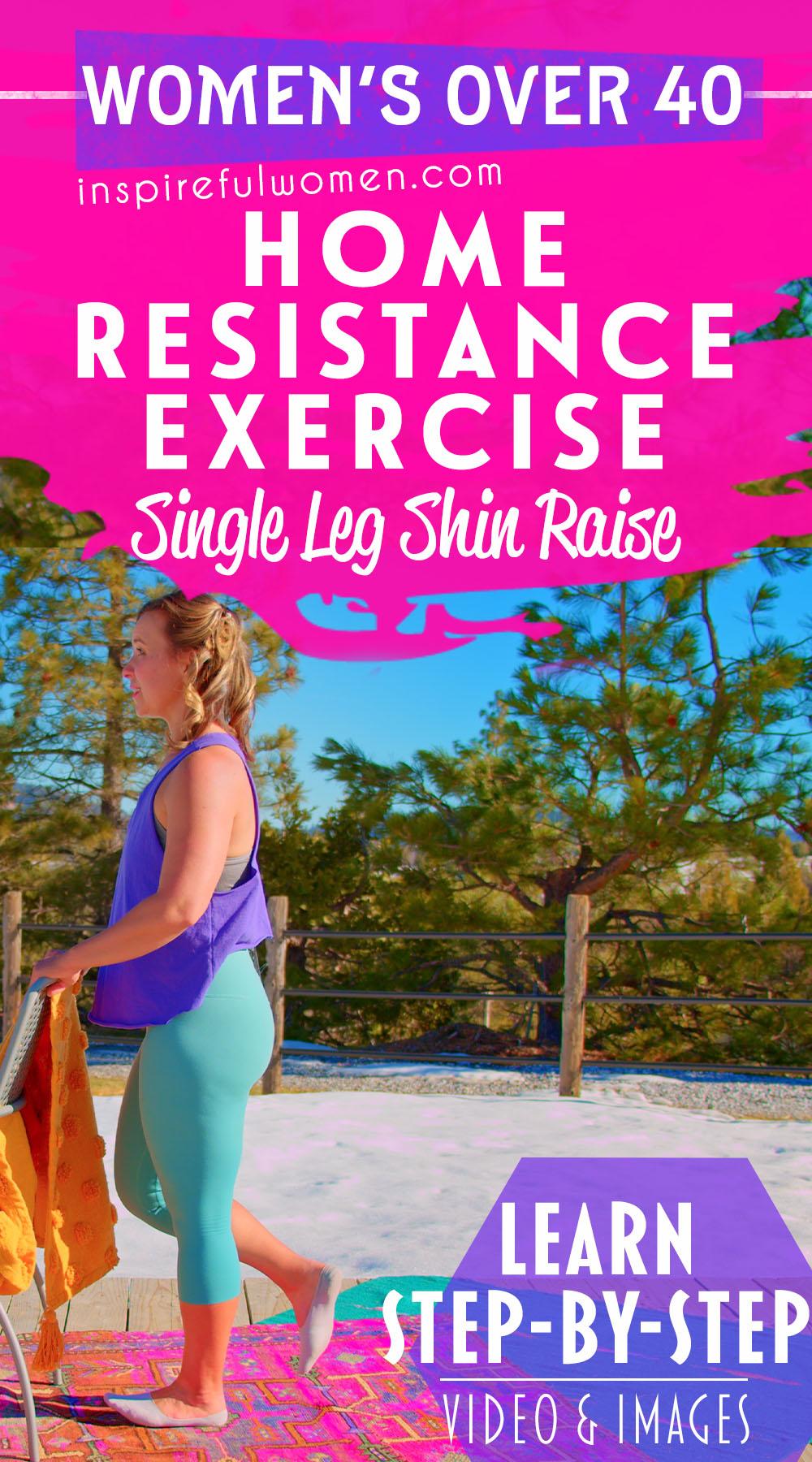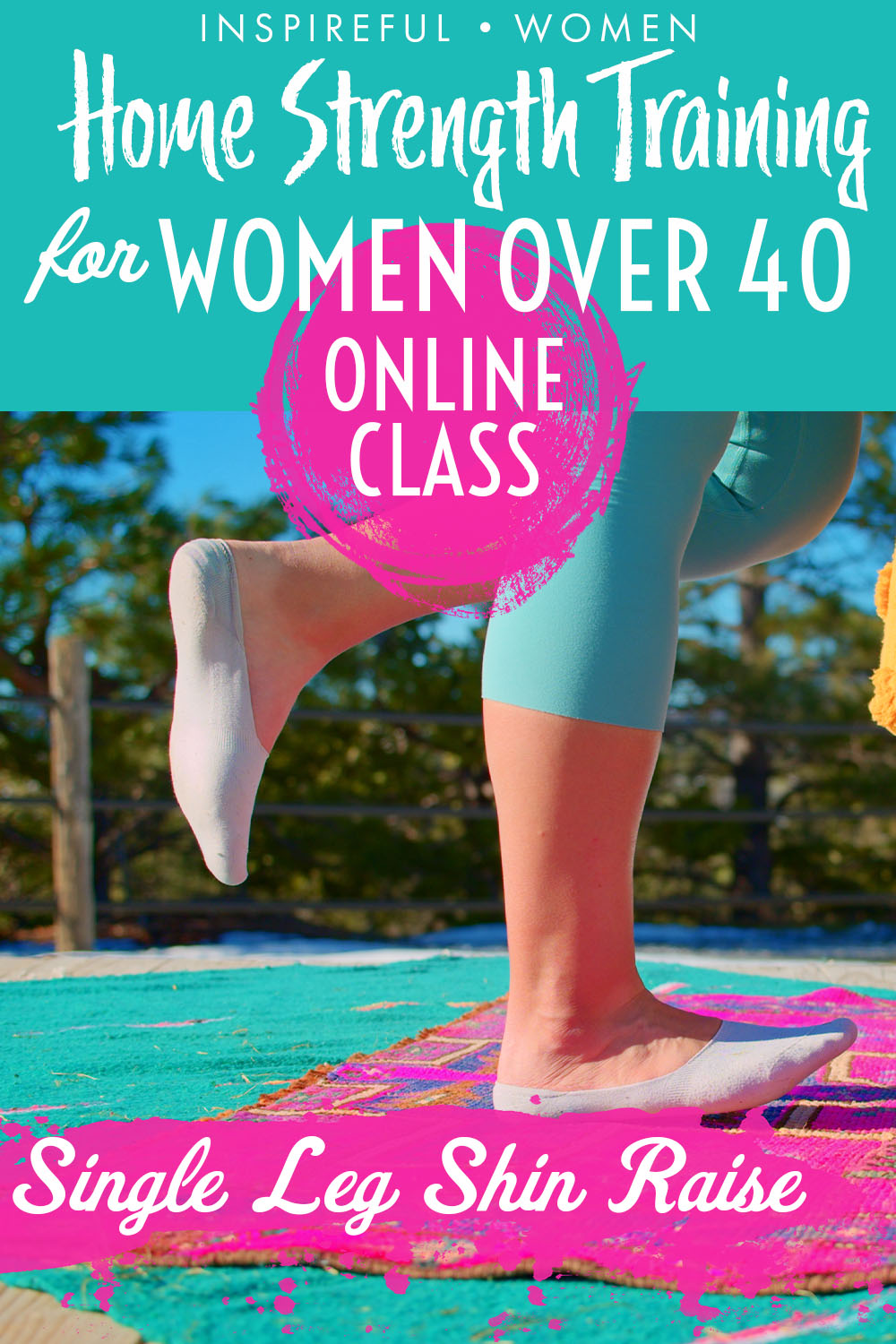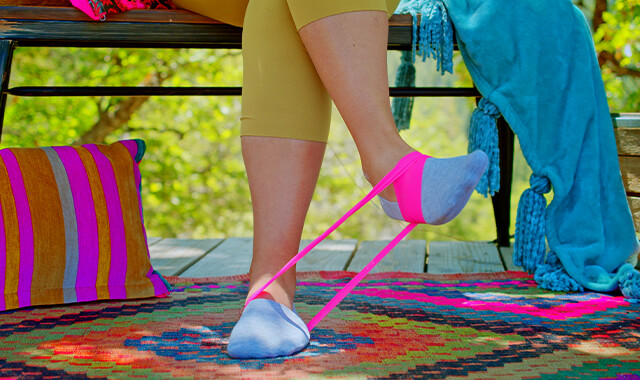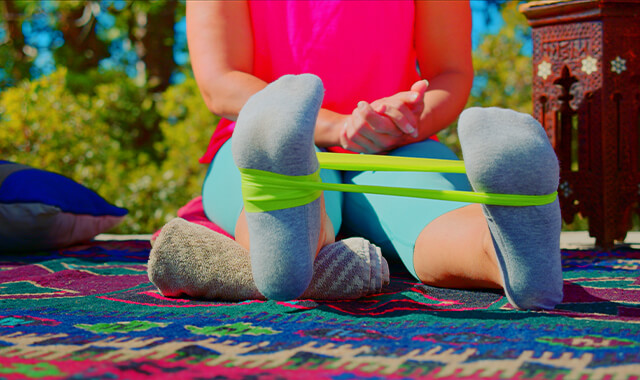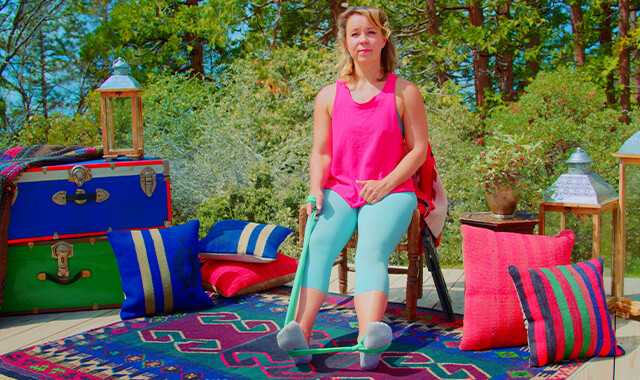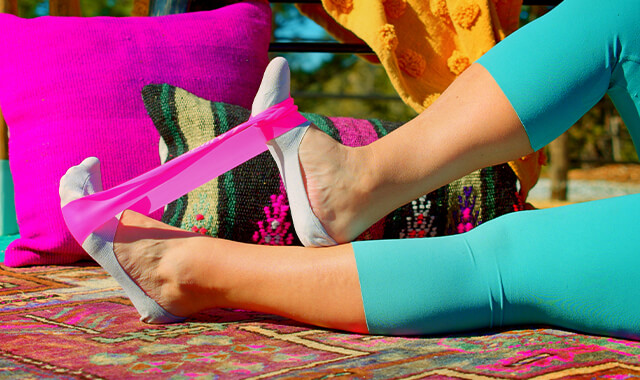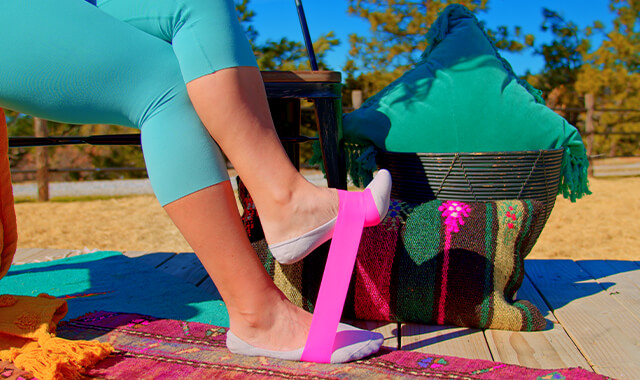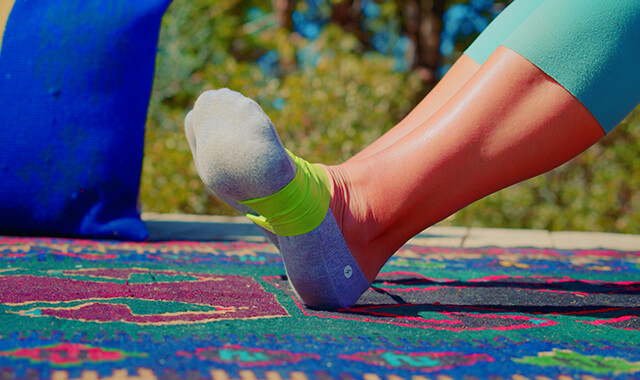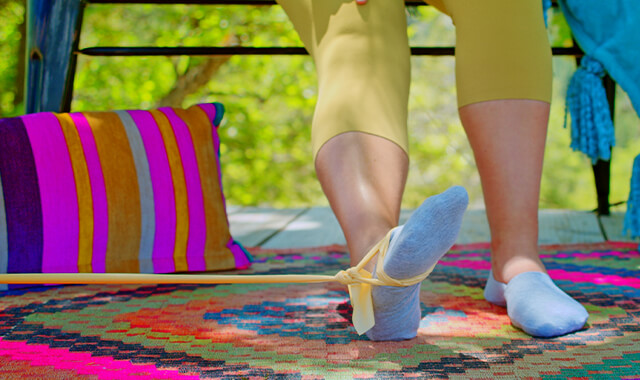Single Leg toe Raise
How to Do The Single Leg Toe Raise - Shin Strengthening Exercise | In-Depth Guide [VISUAL LEARNERS] Beginner
Proper Form, Common Mistakes, & Variations | Home Resistance Training
WHAT DO YOU WANT TO SEE?
QUICK DEMO
QUICK DEMO
MUSCLES THIS WORKS
MUSCLES
MAIN MUSCLES WORKED IN the Single Leg Toe Raise
Tibialis Anterior
OTHER MUSCLES WORKED:
- Extensor Digitorum Longus
- Peroneus Tertius
- Extensor Hallucis Longus
WHAT WE'RE DOING TODAY
WHAT & WHY
BENEFITS OF TRAINING THE Tibialis Anterior
WHAT
WHAT WE'RE DOING TODAY
Other names for this exercise: Single Leg Dorsiflexion
ALL WE'RE DOING:
Lifting the top of our foot.
Hey guys! Today we're working our shin muscles with this easy, beginner version of a toe raise, using only our bodyweight (no weights!) This is also a no-equipment exercise (essentially) because I'm pretty sure you all have a chair laying around somewhere.
IMPROVE ANKLE MOBILITY & STRENGTH
We’re working our shins today and you might wonder, hmmmm…... I wonder why we’re working out our shins - I mean when you look at them, it doesn’t seem like there’s much more than bone right there, just waiting to hurt a lot when we accidentally ram into something. There are muscles in this area though and the main one is called the tibialis anterior - that’s a terrible name, we should really give it a nickname like “Tibby” that’s much cuter.
Our shin muscles bend the ankle to lift the top of the foot towards the shin. They also pull the toes up. The movement to work these muscles is very simple, just lifting the foot up and lowering it back down. The muscles on the front of the lower leg are frequently overlooked in exercise programs. These muscles play an important role in control over the ankle for balance and stability in quiet standing and when we move. They also help to move and position the foot and ankle to absorb shock and transfer forces all the way up the leg.
The shin muscles work at a low level during walking and stepping up. When you take a step forward during walking you must lift (dorsiflex) the top of the foot and toes up to clear the floor as the leg passes under the body. When the leg moves forward the heel lands on the floor first. The shin muscles control the lowering of the foot so that it doesn’t “slap” down to the floor. The tibialis anterior works to decelerate or put the brakes on the foot as gravity pulls the front of the foot down. In general, these muscles are used for long periods of time at a lower level. The muscles help to absorb shock, and maintain posture and balance while standing still and walking. It is beneficial to train these muscles in this way. The focus of these exercises is lifting the foot, holding the position, and lowering slowly, and doing many reps.
WHY BOTHER DOING IT?
WHY
WHY DO WE EVEN CARE?
LOWER LEG MUSCLES TO MATCH OUR UPPER LEG MUSCLES
Most people focus their lower body strengthening program on the muscles that they can see, the bigger muscles like the quadriceps and gluteus maximus. These are very important muscles but the muscles of the lower leg are equally important. It is true that the lower leg muscles are involved in exercises like squats and lunges, but it is also true that you should include some exercises specifically designed to target the muscles of the lower leg to really work them.
AGING GIVES US WEAKER LOWER LEG & ANKLE JOINTS
With age, the muscles of the lower leg get weaker and the ankle joint gets stiffer. The cause and effect probably vary from one person to the next - but the bottom line is that each one of these factors will definitely affect the others. If the muscles are weak, they are less capable of moving the joints through their full range of motion. When the joint range of motion is limited, the muscles won’t be worked through the full range of motion and the movement will become weaker. So basically there is a progressive decrease in strength and range of motion, one limitation feeding off of the other. These changes affect how you move.
STOP TRIPPING ON STUFF
When the tibialis anterior is weak it cannot lift the front of the foot and the toes up as well for walking and stepping over things, this can lead to tripping and even falling. Weak tibialis anterior muscles can increase the risk of falls and contribute to poor balance. The tibialis anterior is important for maintaining and moving the arch to absorb shock as we walk and run and to keep the foot, ankle, knee, hip, and even spine in proper alignment. The feet are often considered the roots of the body, they are our connection to the ground. They are responsible for transferring the forces from the ground all the way up with every step you take. Keeping the muscles and joints of the feet and ankles healthy can help the whole body stay healthy and injury free.
The good news is that if you do the right exercises, you can slow or prevent these changes. One of the best things about adding lower leg exercises is that you develop an awareness of the muscles and how your feet, ankles and lower leg move during simple daily activities.
EVERYDAY LIFE
EVERYDAY LIFE &
MUSCLE FUNCTION
HOW WE USE OUR Tibialis Anterior IN EVERYDAY LIFE
1. THE SHIN MUSCLES PULL THE TOP OF THE FOOT UP (DORSIFLEXION)
- Walking, running
- Holds the foot up to clear the ground as it passes under the body
- Controls the movement of the foot when the heel strikes the ground and the toes lower down to a flat foot position (prevents the foot from “slapping” or dropping down)
- Lifting the toes
- Stepping over objects - like the side of a tub or into a high car
- Lifting the toes off of the gas pedal while keeping the heel on the floor
2. WORKS WITH THE OTHER MUSCLES OF THE LOWER LEG FOR BALANCE AND ANKLE JOINT STABILITY
- Standing
- All upright activity
3. HELPS TO SUPPORT AND MOVE THE ARCH OF THE FOOT
- Absorbs shock during walking and running
- Healthy positioning and moving of the foot and ankle to protect the foot, ankle, knee, hip and low back from uneven stresses that result in degenerative changes or injury
STARTING POINTERS
Starting Pointers
This is an easy exercise to incorporate into your workout, but it can also be done anytime throughout the day. The movement is very simple - just use your shin muscles to lift the front of the foot up off of the floor. Doing the exercise from the floor makes this exercise easy to do anywhere, but it does limit the range of motion of the ankle. The exercise is done on one leg at a time to challenge the muscles and train balance, stability, and ankle control.
The shin muscles need to be able to work to control the movement of the foot as it is lowered back to the floor, and they need to be able to work at a lower level for a long period of time - for standing, balancing, and walking. It is a good idea to do this exercise slowly - with a controlled lift, a hold at the top and slowly lowering down. It is important to do the exercise to fatigue - you should feel the muscle “burn” along the front outside of the shin.
HOW TO FEEL WHAT MUSCLE IS WORKING
How to Feel What Muscle is Working
Sit in a chair with the knee bent and the foot flat on the floor. Bend forward and place your hand on your shin about 6 inches down from the knee, a little bit towards the outside of the lower leg - but still on the front of the leg.
You should be able to feel the shin bone that lies close to the surface on the front of the lower leg. The tibialis anterior attaches just outside of the bony ridge.
Lift the toes and front of the foot off of the floor. You should feel the tibialis anterior muscle contract under your hand.
HOW TO DO THE EXERCISE
LOOKS
HOW Single Leg Toe Raises SHAPE OUR BODY
Tones and shapes the lower legs and ankles.
PROPER FORM
PROPER FORM: Single Leg Toe Raise
EQUIPMENT, SETS & REPS
EQUIPMENT
None needed; Barefoot is best for this exercise, or a shoe with a very flexible sole.
A wall or counter close by to help with balance
SUGGESTED STARTING WEIGHT FOR WOMEN:
Bodyweight
SETS & REPS:
1-2 sets of 30 reps (or to fatigue)
PACE:
Controlled lift up - 1-second count, hold for 1 second, lower for 1 second. Or, you could slow down the movement for 10 reps - 2 seconds up, hold for 2 seconds, down for 2 seconds.
BODY POSITION
BODY POSITION FOR THE Single Leg Toe Raise
Stand with a wall, counter, or chair in front of you to use for balance when you are on the heel of your foot.
FEET/LEGS: Standing on one foot. Bend the knee of your other leg to lift your foot up but do not let the lifted leg touch the working leg (this will make it more stable so the leg stabilizers won’t need to work as much). Knee of standing leg straight - but not locked.
BODY STANCE: Neutral spine (includes the cervical spine), hips and shoulders squared.
HAND/GRIP: Use as needed, lightly touching the wall/chair/counter for balance.
HOW TO DO
HOW TO DO Single Leg Toe Raises
CUE: Keeping your toes up slightly makes it easier to use the targeted muscle which is the tibialis anterior more so than your toe extensors. Focus on lowering your foot back to the ground very smoothly. Being able to lower your foot down smoothly is a sign of strength and good motor control. Toes up are extended, curled under is flexed.
Lift your toes and front of your foot up off of the floor, shifting your weight to the heel. Lift your toes up as high as you can.
Your body should be straight up - with your shoulders over your hips, hips over your heels. Hold the position at the top for 3 seconds.
Slowly and smoothly lower the front of your foot back down (3 seconds).
Repeat to complete your reps. Switch legs and repeat.
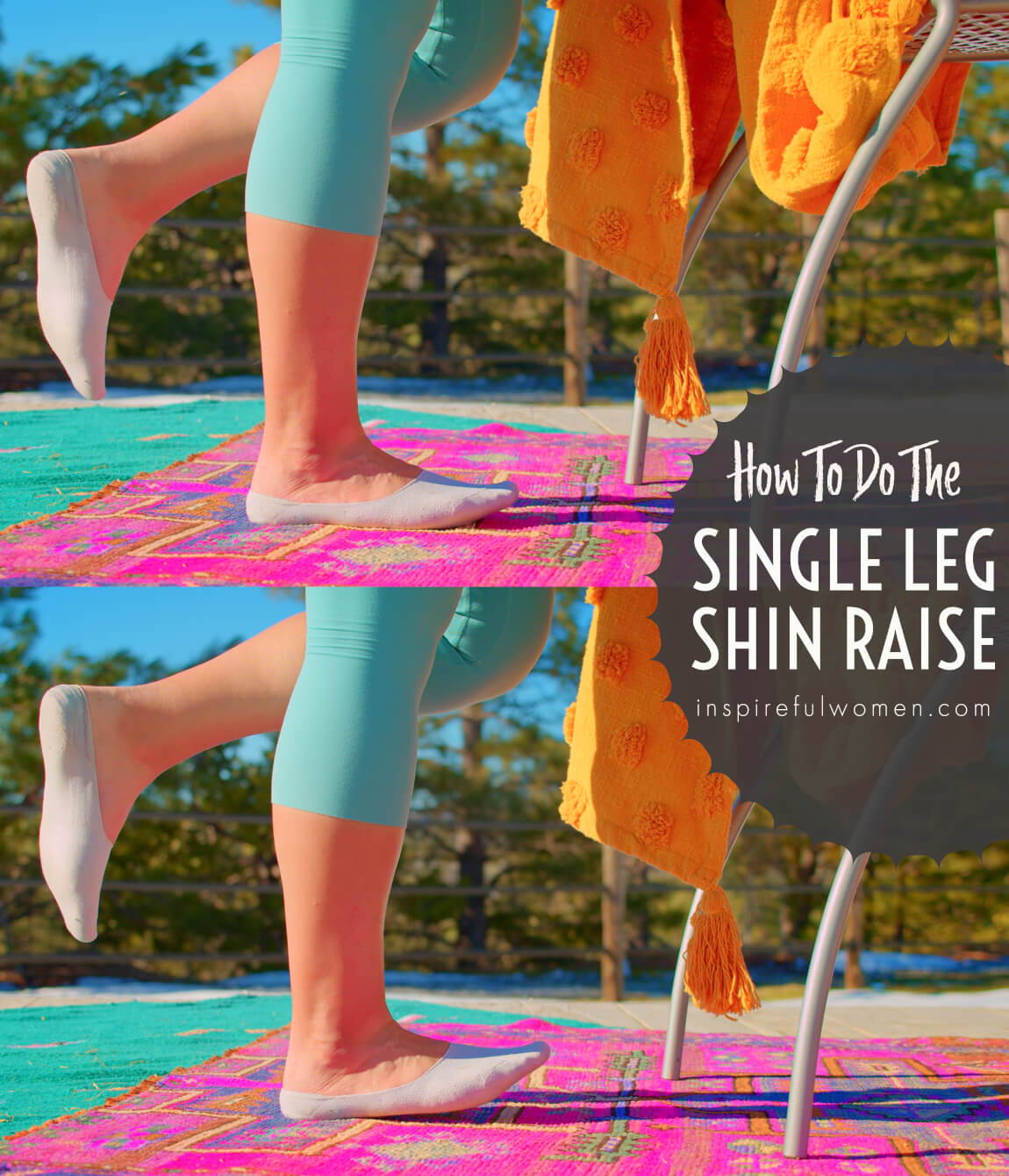
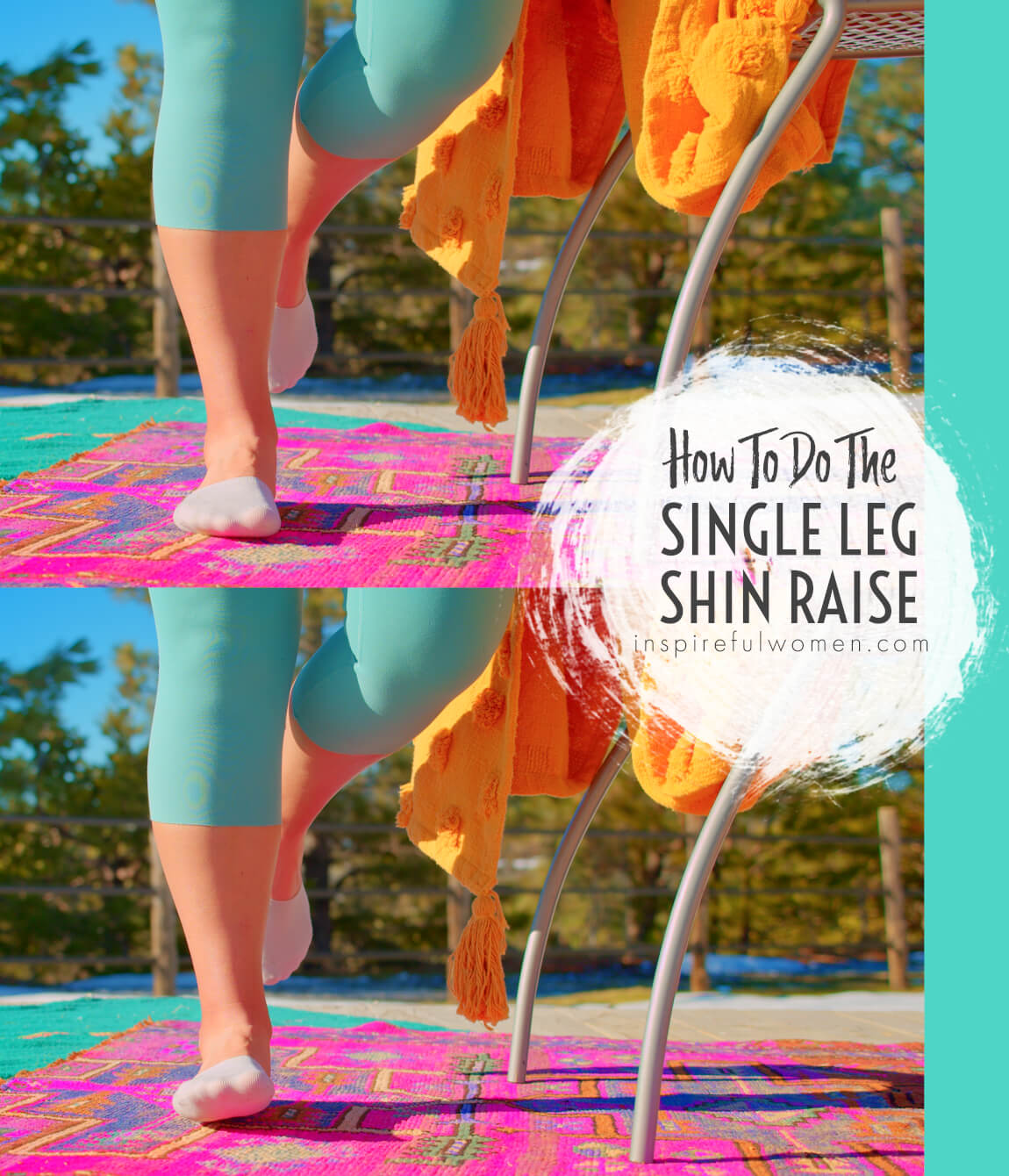
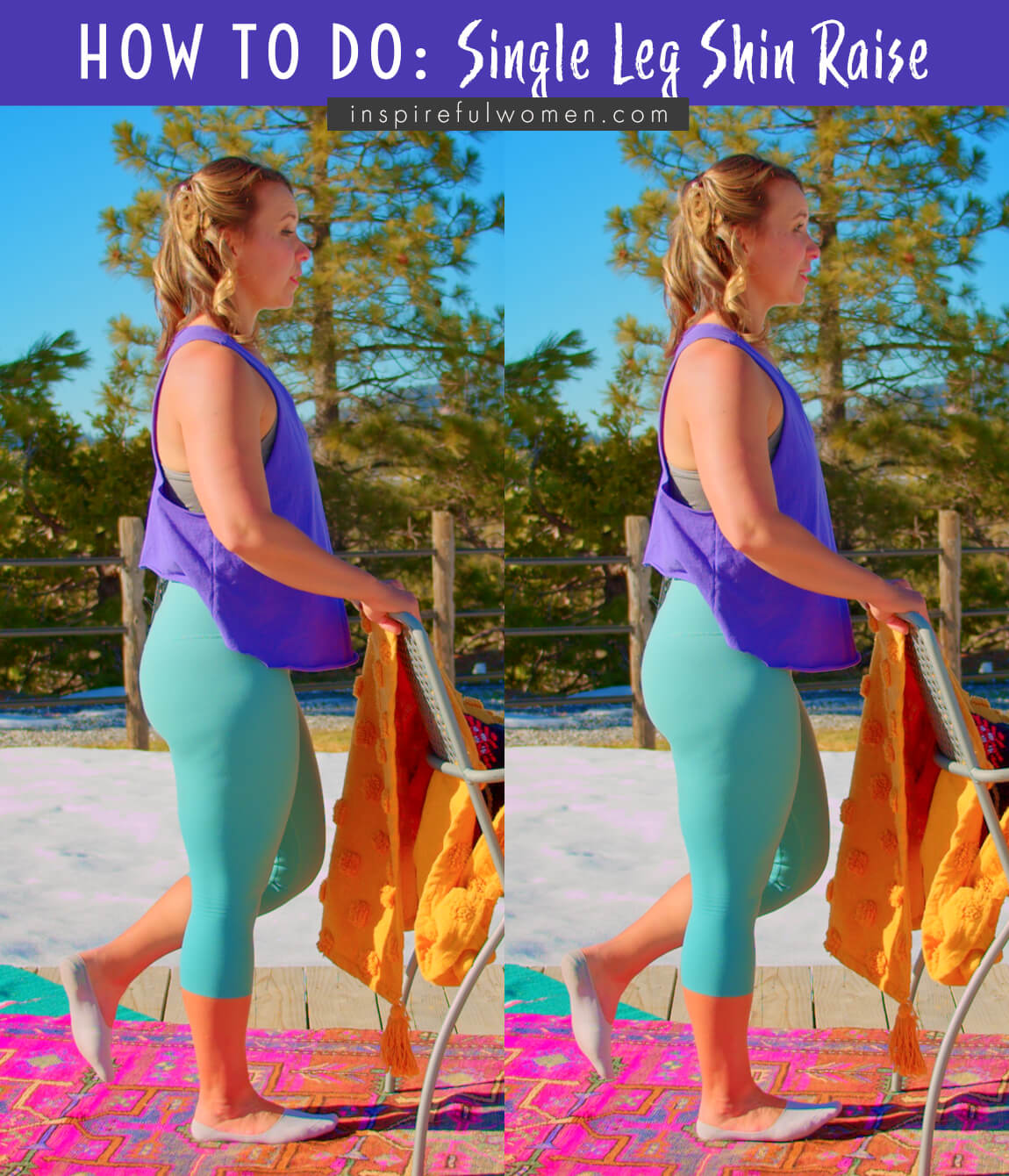
COMMON MISTAKES
COMMON MISTAKES
WHAT TO AVOID WITH THE Single Leg Toe Raise
KEY TIP:
Guess what? Good news! Many avoids are the same for most movements. Once you learn the basics, there's really only a few extra avoids for each individual movement.
1. Avoid Lifting with inside or outside of foot
AVOID: Lifting with the outside or inside of your foot.
WHY NOT?
- This decreases muscle activity of the shin muscles.
WHAT TO DO:
- Think of lifting the second toe straight up towards the center of your shin. The top of the foot should come straight up.
2. Avoid dropping foot down
AVOID: Dropping the foot back down.
WHY NOT?
- It is very easy to just relax the muscles and let the foot flap back down.
- It is important to work the shin muscles eccentrically because they play a big role in controlling the foot as you step forward in walking.
WHAT TO DO:
- Make sure to use the muscles to slowly lower the foot back down to make sure you are working the muscles eccentrically.
3. Avoid shifting weight to sides of foot
AVOID: Shifting your weight to the outside or inside of the foot.
WHY NOT?
- This decreases muscle activity and can strain the ligaments on the sides of the ankle.
WHAT TO DO:
- You should feel the weight distributed across the heel of the foot and the top of the foot should come straight up.
4. Avoid bending knee
AVOID: Bending the knee of the working leg when you lift the front of the foot.
WHY NOT?
- When the foot is planted and the knee is bent it moves the ankle into dorsiflexion - the top of the foot is closer to the shin.
- This will limit the distance that the muscle will be able to lift the foot.
WHAT TO DO:
- The goal is to use the muscle to move the foot through as big of a movement as it is able to.
5. Avoid leaning back
AVOID: Rolling back to your heels.
WHY NOT?
- This is a common error
- This method uses gravity to shift your center of gravity to the heel of the foot as opposed to using your shin muscle to lift the front of the foot and toes up.
WHAT TO DO:
- Keep your body still and focus on just lifting the front of the foot and toes without rocking your body back.
- Focus on feeling the muscle do the work.
SCIENCY STUFF
SCIENCY STUFF
SPIFFILICIOUS FACTS ABOUT MUSCLES & MOVES
The “ankle joint” is actually made up of many different joints, it is a very complex structure made up of many bones and ligaments. All of the muscles of the ankle and foot cross more than one joint. Slight changes in the position of the foot can change the action of the muscles.
The tibialis anterior originates on the lateral side of the front of the tibia and inserts onto one of the smaller bones between the ankle and the foot (medial cuneiform), and the base of the first metatarsal - the long bone that runs along the top inside of the foot. The main actions of the tibialis anterior are to dorsiflex and invert the foot. It also plays a big role in supporting and moving the medial longitudinal arch of the foot.
During walking, the tibialis anterior works both eccentrically and concentrically. When the back leg is lifted to come forward, the tibialis anterior works concentrically to lift the front of the foot and toes have to lift up so that the foot can clear the ground as the leg passes under the body. Once the heel touches down in front of the body, the tibialis anterior works eccentrically to decelerate the front of the foot as it is lowered back down to the floor.
Muscles that also contribute to ankle dorsiflexion and lifting the toes up (extension) are the extensor digitorum longus and the extensor hallucis longus. The peroneus tertius can help to dorsiflex the ankle.
ALLLL MUSCLES & WHEN
ALL MUSCLES WORKING & WHEN DURING Single Leg Toe Raises
The muscles that cross the ankle, knee, and hip will be active throughout the exercise to stabilize the working leg.
The tibialis anterior, extensor digitorum longus, extensor hallucis longus and peroneus tertius contract concentrically to dorsiflex the ankle. The same muscles work isometrically to hold the position at the top of the movement.
The tibialis anterior, extensor digitorum longus, extensor hallucis longus and peroneus tertius contract eccentrically to lower the forefoot back down to neutral.
PIN IT FOR LATER!
